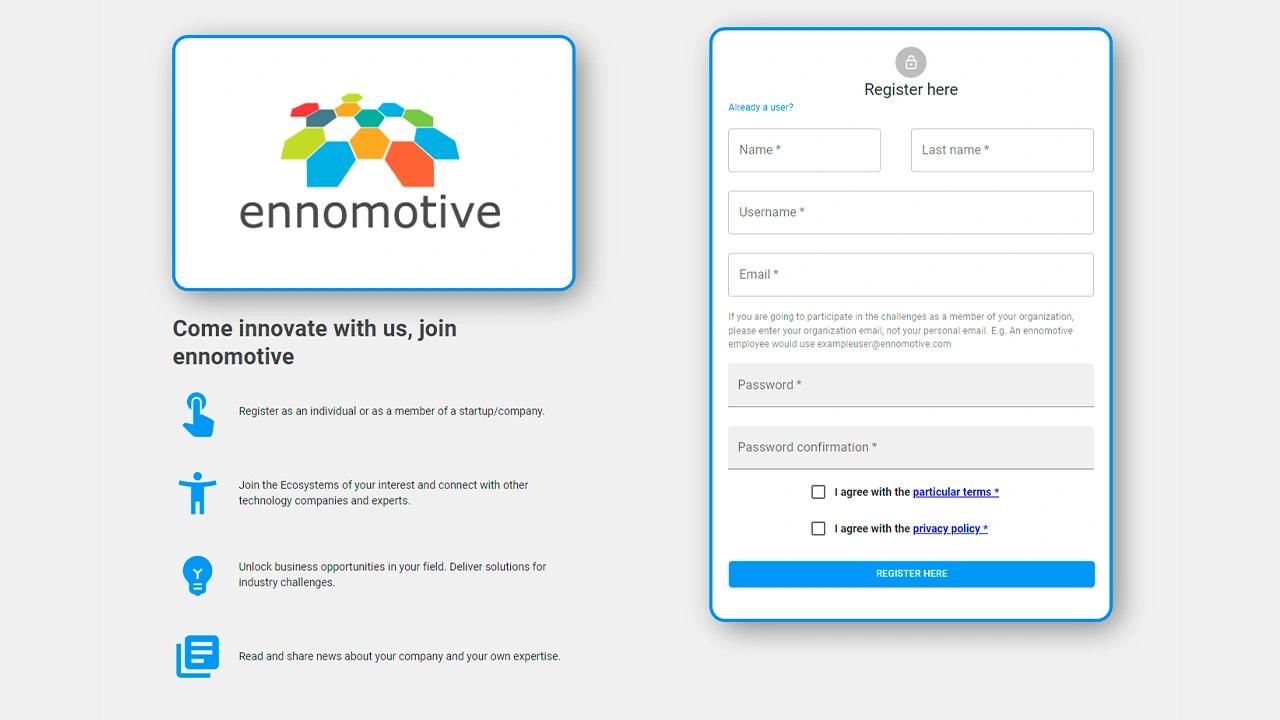When you accept this challenge, you declare that you have read and accepted the Legal Bases and the Challenge Privacy Policy, and accept the transfer of your image rights for your participation and the communication of this Challenge.
Al aceptar participar en este reto, declaro que he leído y acepto las Bases Legales y la Política de Privacidad del Concurso y que acepto la cesión de mis derechos de imagen para mi participación y difusión del Concurso.
Background
Ferrovial - Cintra has more than 50 years of experience developing and managing infrastructure worldwide. They are dedicated to providing the maximum value in each one of their projects, managing all phases of the life cycle of assets.
Cintra is consistently at the forefront of the development of new business solutions. Together with Ferrovial Agromán, they design highways to get the best value of the project. This is done by maximizing revenues and optimizing the balance between initial investment and future operation and maintenance costs, guaranteeing the users the utmost safe, reliable and quality service.
The challenge
Cintra, with Ferrovial Agromán as the main constructor, has improved Interstate 77 in northern Charlotte, North Carolina, by adding electronic-tolled Managed Lanes along 26 miles of the highway. Once construction is finished, I77 Mobility Partners (I-77 MP), a consortium led by Cintra, will be responsible for the operation and maintenance of the project for the remainder of a 50-year agreement with NCDOT. The I-77 Express Lanes run adjacent to the existing general purpose free lanes, separated by plastic delineators (see https://www.ferrovial.com/en/business/projects/i-77-express-lanes/).
Delineators’ main purpose is to prevent toll violators to enter or exit the toll lane without crossing a toll gantry. Toll gantries are used to register every customer’s transaction, by reading their license plate or their toll tag, so tolls can be billed afterwards.
The current delineator model is City Post GD and they are glued down with epoxy resin. Screwed-on delineators are not suitable since they damage the pavement by creating a discontinuity on its surface. They can detach and potentially even cause flat tires and other safety issues to highway users.
The Concession Agreement (CA) requirements establish the replacement of all damaged or missing delineation posts/reflectors when there are two or more consecutive missing, or more than 6 inches out of plumb. They shall be free of functional defects and visible to the travelling public.
Current delineators, as part of the routine maintenance, will have to be cleaned to accomplish the reflectivity requirements in the CA. The I-77 MP Maintenance Team has tried to clean them with sprayed cleaning solutions, but the dirt does not come out as it depends on the type of dirt they present. This is important to consider, since delineators are subject to live traffic and roadway maintenance activities, and can present petroleum-related dirt, which is difficult to get rid of.
A proposal has been made to paint them instead of cleaning them, but tests have not been performed yet. They must keep the same performance characteristics as before being painted. Besides, painting can only be done in summer and within certain temperature ranges, and reflective sheeting must be added afterwards.
Maintenance must be performed with rolling closures from 9pm to 6am. The closure must move faster than 3mph and stop up to 15 minutes. During a stop, it takes currently around 3 minutes to replace a delineator.
As soon as there is a snowfall, there can be a detachment hazard, caused by the snowploughs operated by a third party (not I-77 MP). Furthermore, there are certain materials that should be considered, like brine, which is used to prevent snow and ice from freezing the highway, that might damage the delineator or its paint coat.
What the client is looking for
The main goal of this challenge is to find a solution to reduce the maintenance cost of the delineators while complying with the contract requirements.
Modifications in the design or materials of the delineators are accepted in this challenge, always bearing in mind the business case and safety.
Physical separation (delineators) is preferred but other creative approaches will also be considered. The delineator must be approved by the NCDOT (see list) but a new type of delineator may also pass the test (feasibility evidence is encouraged) of NCDOT approval.
The proposed solution should consider only the closure of the right adjacent lane (toll free) and implement the necessary methods and equipment.
Find attached the following annexes:
- Annex 1 – Delineator pictures
- Annex 2 - NCDOT Approved Delineators
- Annex 3 - Delineator Brochure and Installation Procedures
- Annex 4 - Layout plans and cross sections
- Annex 5 - Description of the Challenge.pdf
- Annex 6 - Ferrovial Challenge Video.mp4
- Annex 7 - Legal Bases (English version)
- Annex 8 - Bases Legales (Spanish version)
Evaluation Criteria
The solutions will be evaluated according to these criteria in the following order of importance:
• Safe solution
• Technically improves the cleaning process.
• Technically improves the replacement operation.
• Best Business Case: initial investment (CAPEX) + operational cost (OPEX))
• Highest degree of automation
• Lowest environmental impact (e.g. water consumption, chemicals hazards, etc.)
Deliverables
This is a 2-round tournament with the following submissions:
First round
A PDF document including:
- Brief description of the proposed solution, including a brief specification about the equipment, materials, operational regime...
- Sketches, layouts, plans, models 3D, pictures…
- Feasibility evidence of the solution (if there is anyone)
- Estimated investment and operations costs: establish the investment on equipment, number of workers, estimated times, and materials cost.
We are kindly asking you to submit your solution description with a bit of structure (avoiding long texts), including index and lists. Support your solution with images and outlines or diagrams. Generally, this will help us to better understand the solution.
Second round
A PDF document including:
- Detailed design of the process, including the specification of the required equipment and materials, the building layout of the solution.
- Required calculations (mechanical, others...)
- Detailed business case (including approximate operational costs)
Timeline
1st round – 6 weeks + 3 weeks for evaluation
2nd round – 4 weeks + 2 weeks for evaluation



